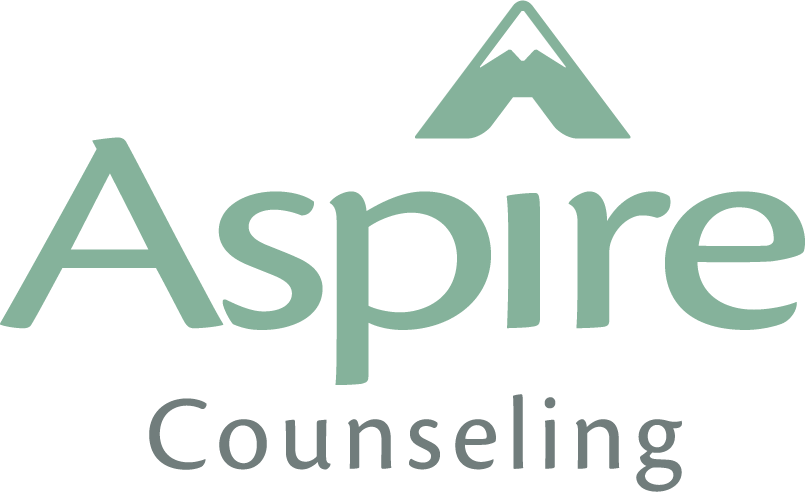When your child Has OCD: A Parent Guide
If your child is stuck in cycles of distressing thoughts and “have to” rituals, you’re not alone—and there is real help. At Aspire Counseling, we treat OCD with Exposure and Response Prevention (ERP), the gold-standard approach. If you’re ready to learn more about treatment, start with our OCD therapy page. If you’re still sorting out whether what you’re seeing is anxiety or OCD, our Children’s Anxiety Counseling page can help you decide next steps.
OCD—More Than Quirks or Cleanliness
OCD isn’t just being “extra neat.” It’s a pattern of obsessions (unwanted, intrusive thoughts or images) and compulsions (repetitive behaviors or mental acts done to feel safer or “make it right”). Kids and teens know the thoughts don’t quite add up, yet the anxiety feels unbearable in the moment. Common themes for ages 9–16 include:
Contamination (germs, illness, sticky/dirty feelings)
Harm (“What if I hurt someone by accident?”)
“Just-right”/symmetry (redoing things until they feel right)
Checking (locks, homework, messages)
Taboo/“bad” thoughts (violent or religious/sexual thoughts that clash with their values)
OCD often shows up where your child most wants to be a good kid: schoolwork, friendships, faith, or family rules. That’s part of why it feels so scary to them—and why they work so hard to hide it.
Signs It Might Be OCD (and Not “Just Anxiety”)
Anxiety and OCD can overlap, but here are red flags that point toward OCD:
Time sink: rituals or reassurance-seeking take 1+ hour/day
Can’t move on: they redo, confess, or ask the same question over and over
Rules & avoidance: rigid routines to prevent a feared outcome; quitting activities they love
“Stuck” moments: meltdowns or shut-downs if prevented from completing a ritual
Mental rituals: silent praying/counting, reviewing memories, or “canceling out” thoughts
If you’re seeing several of these and it’s interfering with school, sleep, friends, or family life, it’s time to talk with an OCD-trained therapist. We’re happy to help you sort this out and get a plan in place.
What Treatment Looks Like (and Why ERP Works)
ERP teaches kids to face fears gradually and resist the urge to do the compulsion. It’s collaborative and paced carefully:
Map the OCD cycle. Your child learns how obsessions trigger anxiety → compulsions → brief relief → stronger OCD next time.
Build a fear ladder. Together, we identify small-to-big “exposures” that match their theme (e.g., touching “contaminated” items, writing a feared phrase, leaving homework slightly imperfect).
Practice the pause. During exposures, your child practices not doing the ritual or asking for reassurance, while we coach them through the wave of anxiety.
Strengthen real-life skills. Mindfulness, values-based actions, and self-compassion help them handle uncertainty and stop OCD from calling the shots.
Your Role as a Parent (What Helps Most)
It’s natural to reassure or make accommodations (“I’ll wash it again,” “I’ll check it for you”). Unfortunately, those well-meant helps often feed OCD. In therapy, we’ll show you how to:
Reduce reassurance and accommodations in a stepwise, supportive way
Use coaching language (“I know this is hard—and you can handle hard things.”)
Notice wins and reinforce effort over perfection
Align school supports (504/IEP as needed; simple classroom scripts for reassurance-seeking)
Model healthy uncertainty (“I can’t be 100% sure—and that’s okay.”)
Many parents tell us that once they understand the OCD cycle, home gets calmer and kids feel more confident trying exposures. For extra support, we also offer psychoeducation resources for families. (Aspire Counseling)
Ages 9–12 vs. 13–16: Tailoring the Approach
9–12 (tweens): We keep explanations concrete and gamified—XP points, visible ladders, “boss-level” exposures—while looping parents in closely to shape routines at home.
13–16 (teens): Teens get more say in the plan and often appreciate clear, science-backed reasons for ERP. We link treatment to what they care about: sports, friendships, grades, driving, freedom.
Across ages, we celebrate brave behavior, not symptom disappearance. Confidence grows as your child learns: “Anxiety goes up… and it also comes back down—even if I don’t do the ritual.”
Why Aspire for OCD Treatment
At Aspire, several clinicians are specifically trained in ERP and child/teen anxiety work. Two great options for 9–16:
We pair specialized treatment with a warm, practical approach—so your child feels supported and challenged just enough to make progress.
Hope Is a Plan—Let’s Build Yours
OCD is treatable, and your child can get their time, energy, and joy back. Whether you’re ready to jump in or just have questions, we’re here to help.
Learn more about OCD therapy at Aspire and our Child Counseling services.
Prefer a broader overview first? Check our Children’s Anxiety Counseling page for signs, when to seek help, and what treatment involves.
Or contact us to schedule. We offer in-person appointments in Columbia or online anywhere in Missouri.
